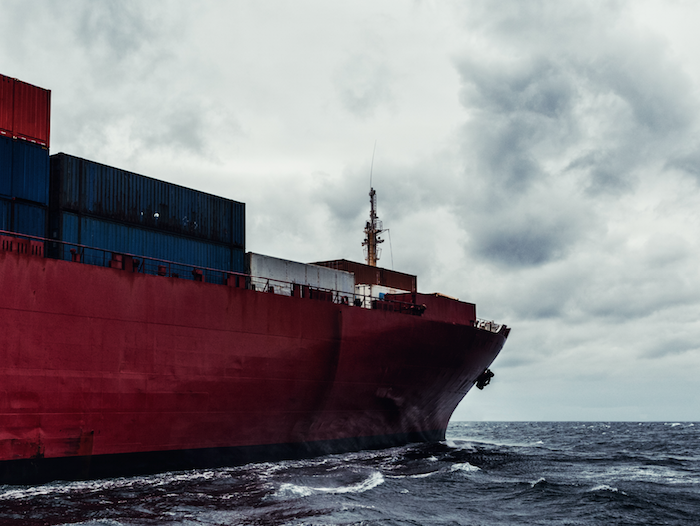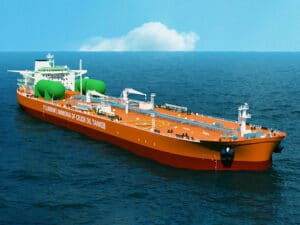
Q&A: Protective coatings for shipbuilders, green tech, and more
Written by Heather Ervin
(Credit: Shutterstock)
Last month, we covered marine paints and coatings in the magazine edition of Marine Log. To keep that conversation going, we wanted to offer our readers a Q&A with Chris Birkert of AkzoNobel, a company that has supplied protective coatings to shipbuilders for 140 years.
AkzoNobel’s products are used to coat everything from some of the world’s tallest and most sustainable buildings to 120 foot long superyachts and liquefied natural gas projects. Its anti-corrosive protection, fouling control technologies, passive fire protection and aesthetic solutions are used the world over.
And now, here’s Birkert in an exclusive Q&A with Marine Log:
Marine Log (ML): Can you tell us about some recent projects that are underway?
Chris Birkert (CB): We are really excited to be working on a project with Blue Star Ferries in Greece, where we have been enlisted to supply our high performance Intersleek 1100SR system on four ferries. Intersleek 1100SR is a biocide-free foul release coating, which provides protection of the underwater hulls for up to 90 months. So far, we have completed painting three of the four ferries, with the final vessel docking in June.
The project really exemplifies the demand in the industry for high performance systems that are sustainable, cost-effective and efficient. Intersleek 1100SR is not only biocide free, it delivers 9% fuel savings and CO2 reductions compared to conventional antifouling coatings.
ML: How can digital tools help shape the future of the marine sector?
CB: “Big Data” has had a huge impact on the marine industry and will continue to be a disruptive trend.
Digital tools will play a key role in supporting marine customers to track vessel performance against the proposed IMO Existing Ships Energy Efficiency Index (EEXI), set to be introduced on January 1, 2023, and the EU carbon-trading scheme, which came into effect this year.
For example, the digital Intertrac platform is already helping customers track and monitor hull condition and in-service performance, bringing more real-life data into decision-making around choosing coatings at future dry dockings, as well as onboard maintenance by the crew. This is also instrumental in helping customers to save precious time and resources.
In providing economic and environmental analysis of fouling control coatings over a ship’s specified in-service period, ship owners can accurately assess the performance of different coatings on their vessels before they are applied and help control CO2 emissions.
ML: What initiatives are underway that could affect marine at the moment?
CB: With a raft of ambitious sustainability objectives, including plans to cut carbon emissions in half by 2030, AkzoNobel is consistently recognized as one of the most sustainable supply chain partners in the marine industry. Many marine owners and operators have also published carbon neutral objectives so, naturally, initiatives focused on sustainability and lowering CO2 emissions are a key focus.
The ‘Phase Three’ changes to the IMO Energy Efficiency Design Index (EEDI) will further lower the CO2 emission targets for ship owners. The impending IMO EEXI will also put real CO2 reduction on ships in service to achieve 30% CO2 reductions by 2030.
There is also an EU carbon-trading scheme, which comes into effect on January 1, 2022, which will see a ‘carbon tax’ scheme implemented for vessels either calling or sailing in European waters.
It is also predicted that new legislation will be introduced to increase scrapping of old vessels that can’t achieve the required reductions against the Carbon Intensity Indicator. Retrofits on newer vessels will likely increase, while there will be a high demand for the construction of new vessels powered by greener fuels.
All this sustainability legislation will increase demands on ship owners to reduce their CO2 emissions in service. AkzoNobel is in a position to really help support customers in their journey to carbon neutral. As mentioned, our own company ambitions, actions and contribution make us a key partner when it comes to sustainability. Our solutions are also helping to bring value to the shipping industry through fouling control systems—which reduce fleet CO2 emissions when in operation—as well as the use of solvent-free and water-based solutions, which mitigate VOC emissions on application, and new lightweight technologies, which are helping reduce vessel weight.
With sustainability at the forefront of our minds when developing solutions and innovations, our products are created with the goal to support both our customers in abiding by new legislation and regulations and ensure the health of our oceans.
ML: Can you talk more about sustainable change within the sector?
CB: Sustainability is hot on the agenda across almost every global sector. That includes the marine—and marine coatings—industries.
Environmental legislation has been tightening over the past few years and will continue to get even tighter. To address this, we are continually researching and innovating to future-proof our products and ensure we remain compliant. The European Green Deal is a really good example of this as the EU aims to be the first climate-neutral continent, with the goal of reaching no net emissions of greenhouse gases by 2050.
The shipping industry alone contributes the same CO2 emissions as the whole of Germany, so it’s crucial that we help our customers reduce their carbon footprint and help the industry achieve its carbon-neutral goal.
We are constantly changing and updating the raw material basket that we can use to improve our and our customers sustainability profile—from application and in-service performance through to the removal or disposal of the asset.
As mentioned, AkzoNobel has been recognized in its sustainability efforts, including EcoVadis, which awarded us a Platinum rating in its latest review, placing us in the top 1% of over 65,000 rated companies. We subscribe to the UN Sustainability Goals and are recent members of the IMO GloFouling Partnerships Project.
ML: How is coating technology changing as maritime moves to a more green future?
CB: Coating technology is changing a lot to respond to sustainability demands, legislation and emissions targets.
We are seeing a move to high solids products, formulated to have a higher concentration of resin and a smaller concentration of volatile organic compounds (VOC). VOCs are a key topic of discussion in the coatings industry. So bringing innovations such as our Intergard 9700, solvent-free uniprimer, and Intershield 300HS, our high-solids version of our flagship anticorrosive primer, which has 80% volume solids are really helping to achieve this.
We have also been able to provide Isocyanate-free cosmetic finishes such as Interfine 878 and Biocide-free antifouling solutions, such as Intersleek 1100SR, both of which provide a more sustainable option and solution but in different ways.
Through our “Paint the Future” initiative, we are collaborating with start-ups to drive forward innovation.
This year, we invested in pioneering technology from high-tech start up Qlayers, to bring to market yard-friendly application methods, which reduce overspray.
Our team of scientists and innovators are always looking to the future and searching for sustainable solutions to drive a more environmentally friendly industry and protect the planet.




